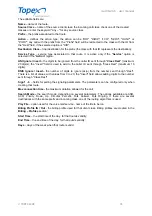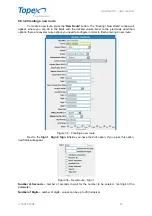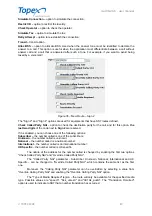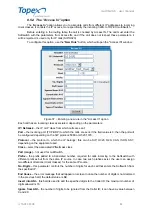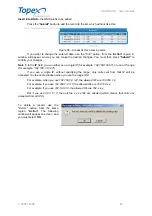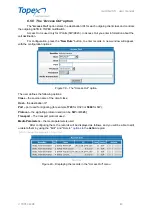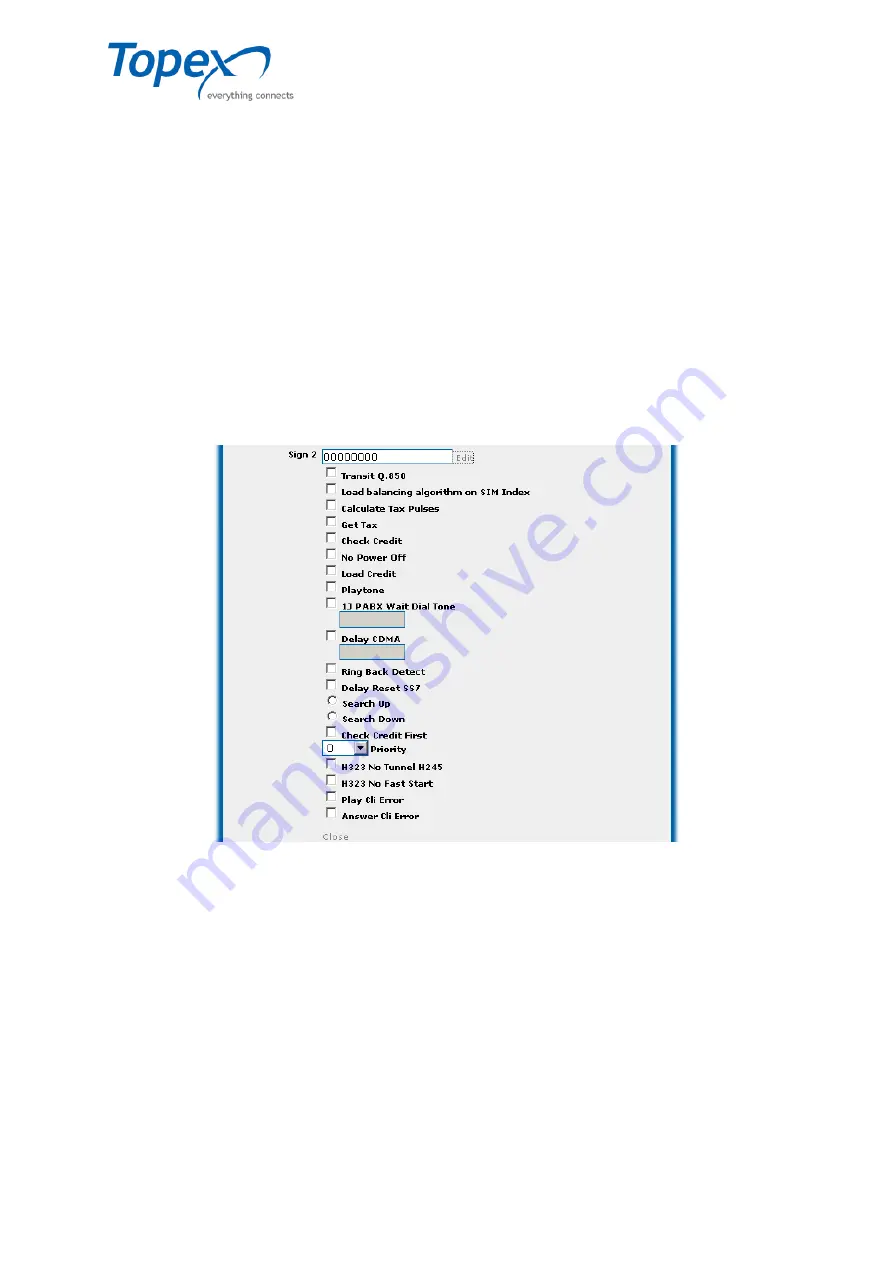
multiSwitch – user manual
© TOPEX 2008 69
-
Load balancing algorithm –
establishes the algorithm for changing SIM cards in GSM interfaces.
When using "0", the LCR algorithm is used, and when using "1", the load balancing algorithm for
GSM cards is used. This option is used when interconnecting with a multiAccess TOPEX
equipment.
-
Coupling of the ring-back tone -
the system allows for a second call to be placed, until the
receiver of the first call will pick up the call.
-
Audio Level
– level of the audio signal. Values can be between 0 (maximum level) and 7
(minimum level)
-
Verify CLIR –
check settings for Calling Line Identification Restriction
-
GOODASR –
used for equipments with GSM modules
-
Cat Call –
all calls made through the equipment will be closed
-
Test Net–
used for equipments with GSM modules
-
Check Call Back –
the call that will come through this direction will be checked by the call back
function. The call back table will be analyzed with the Caller ID.
-
Module CDMA –
used for equipments with CDMA modules
Figure 21 – Options for the "Sign 2" field
Transit Q.850
– transfers the Q.850 code to E1 ISDN
Load Balancing algorithm on SIM Index
- used for equipments with GSM modules
Calculate Tax Pulses
– calculates the tax pulses for incoming calls
Get Tax
– get tax information
Check Credit
– checks the credit
Load Credit
– reloads the credit
13 PABX Wait Dial Tone
– wait dial tone for analogue junctions
Delay CDMA
- used for equipments with CDMA modules
Ring Back Detect
– detects a ring back
Delay Reset SS7
- used for signaling gateway equipments
Search Up / Search Down
– establishes the rules by which the channels are selected on ISDN
























